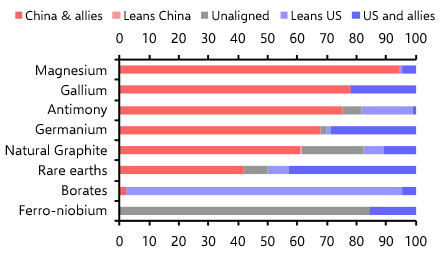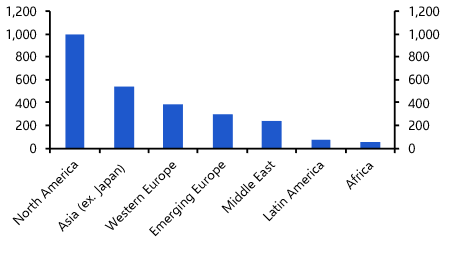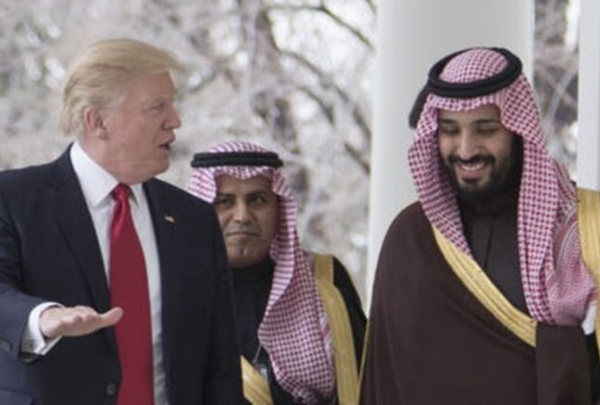The rapid escalation of the conflict between Iran and Israel, which has now pulled in the US, has – for the time being at least – displaced trade, tariffs and fiscal vulnerabilities at the top of a lengthening list of investor concerns. We’re covering the crisis in detail, including mapping out how different scenarios might evolve and what the macro, market and commodities implications might be. All our key analysis can be found here.
With investors appearing to be largely shrugging off this crisis so far, there are two broad points worth making. The first relates to uncertainty and its interplay with economic forecasting. John Maynard Keynes made a distinction between “risk” and “uncertainty” in which “risk” is quantifiable and involves situations where the probabilities of outcomes are known, or can be estimated, and these probabilities can be incorporated into decision-making. Keynes used the example of roulette, but buying insurance is another, where probabilities of events (like car accidents) are statistically observable.
In contrast, “uncertainty” refers to situations where the future is unknown and probabilities cannot be meaningfully assigned. Accordingly, while economic models can deal with “risks” they struggle to incorporate “uncertainty” – and whether it is a petulant president formulating trade policy on social media or a deepening crisis involving nuclear powers (or aspirant nuclear powers) in the Middle East, the world is becoming more uncertain. One obvious conclusion is that economic forecasts are going to become more prone to error.
The second point relates to how geopolitical crises affect the global economy. We have typically viewed such events through the lens of global economic fracturing, and there is a clear fracturing theme to recent developments in the Middle East. While most countries in the region have attempted to straddle the US-China divide, Iran is one of the few that sits squarely in the China bloc. If the regime in Tehran is eventually toppled then Russia, and by extension China, could lose a key ally in the region.
The consequences of any such events would play out over many years. The more immediate impact on the global economy would depend on the extent to which the crisis either disrupts the production and shipment of oil and natural gas from the region or causes prices to spike in anticipation of any such disruption. There are two concerns in this regard. The first is that Iranian oil production will be affected by the conflict. This could knock out up to 3.4 million barrels per day from global production (or 3.3% of total supply). The second, and more serious threat, is that Iran, or Iranian proxies, could disrupt shipments of oil and natural gas from the region through the Strait of Hormuz. This carries around 20% of global oil production and 20% of liquified natural gas trade and so is a critical choke point. In response to the US attacks over the weekend, Iran’s parliament voted to close the Strait, although a final decision rests with the country’s security chiefs.
Brent crude has jumped in early trading today, briefly topping $80 per barrel. Crucially, according to our estimates, all of the increase in the oil price since the start of the conflict has been due to a rise in risk premia in the market. (We think that the risk premia in oil markets is now $10-15pb.) The increase in recent weeks suggests that traders are taking the threat of a disruption to supply extremely seriously. Indeed, prediction markets think it is now more likely than not that the Strait of Hormuz will be closed at some point this year.
However, the moves in the oil market do not yet represent a significant threat to the global economy. While oil prices have risen by around $8pb since the start of the conflict, they still remain below the level this time last year. This is due in large part to an expansion of supply from OPEC+. If sustained, we estimate that the increase in oil prices so far would add only 0.1-0.2 percentage point to inflation in advanced economies. This is unlikely to have a significant bearing on central bank policy decisions.
It would take a larger and more prolonged rise in oil prices to have a meaningful impact on monetary policy. Specifically, it would probably require higher energy prices to feed back into core inflation – for example because producers passed on the higher cost of energy to consumers. This is less of a threat in a world where consumer demand is already cooling. Likewise, it would require a large and sustained increase in oil prices – somewhere at or above $100pb – for real incomes in advanced economies to sustain a material hit.
Past experience also provides some comfort in this regard. Large and sustained spikes in global energy prices caused by geopolitical flare ups in the Middle East are rare. Indeed, it is striking that oil prices fell back quickly following Iraq’s invasion of Kuwait in 1990, and did again after the US invasion of Iraq in 2003.
It is still a reasonable assumption that the impact of the escalating conflict in Iran on global growth and inflation will be similarly limited. Yet in relatively recent episodes, the spike in oil prices was short-lived because the geopolitical risks to oil supplies were also short-lived. We can be less confident that the same will be true today. In a world of radical uncertainty, there’s no assurance that history will repeat itself.
In case you missed it:
At the core of our global fracturing framework is the emergence of competing economic blocs led by the US and China. Despite the transatlantic strains that have followed Trump’s return to office – and speculation about a fragmenting Western alliance – the signs of the past week are that Europe remains firmly in the US orbit and in opposition to China.
Russia’s close ties with Iran were underlined by Foreign Minister’s Abbas Araghchi’s flight Sunday to Moscow for talks with Vladimir Putin. We’ll be discussing the implications of the Israel-Iran conflict for Russia in a Drop-In on the country’s economic outlook this Thursday. Register here.
Liam Peach, who’s on the panel for that Drop-In, was recently named the most accurate forecaster of Russia’s economy by FocusEconomics. He was one of several team members recognised, with Capital Economics picking up more overall first-place awards than any other institution. Economic forecasting may be more error-prone in an uncertain world, but the team’s work continues to stand out when clarity is in increasingly short supply.




